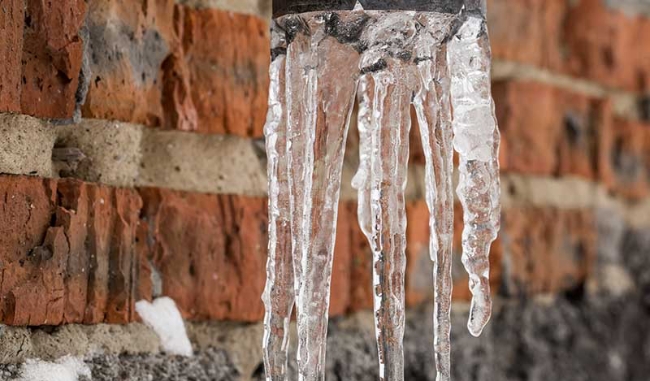Avoiding Your Pipes from Freezing: Top Tips
Avoiding Your Pipes from Freezing: Top Tips
Blog Article
The publisher is making several good points relating to How to prepare your home plumbing for winter weather overall in this article below.

Cold weather can damage your plumbing, particularly by freezing pipes. Here's just how to prevent it from occurring and what to do if it does.
Introduction
As temperature levels decrease, the danger of frozen pipes boosts, possibly causing pricey fixings and water damage. Comprehending how to avoid icy pipes is critical for property owners in chilly climates.
Prevention Tips
Insulating prone pipes
Cover pipelines in insulation sleeves or utilize warm tape to shield them from freezing temperature levels. Focus on pipes in unheated or outside areas of the home.
Heating methods
Keep indoor spaces appropriately heated up, especially areas with plumbing. Open up cupboard doors to permit cozy air to flow around pipes under sinks.
Exactly how to determine icy pipelines
Look for lowered water flow from faucets, unusual odors or noises from pipelines, and visible frost on exposed pipelines.
Long-Term Solutions
Structural changes
Take into consideration rerouting pipelines away from exterior walls or unheated locations. Add additional insulation to attics, basements, and crawl spaces.
Upgrading insulation
Purchase top notch insulation for pipelines, attics, and wall surfaces. Proper insulation assists preserve regular temperatures and minimizes the danger of frozen pipelines.
Protecting Exterior Pipes
Garden hose pipes and outside faucets
Separate and drain yard hose pipes prior to winter. Set up frost-proof faucets or cover exterior faucets with shielded caps.
Recognizing Icy Pipelines
What triggers pipelines to ice up?
Pipelines freeze when revealed to temperature levels listed below 32 ° F (0 ° C) for extended durations. As water inside the pipes ices up, it expands, taxing the pipe wall surfaces and possibly triggering them to break.
Threats and problems
Frozen pipelines can result in supply of water disruptions, residential property damage, and costly repairs. Ruptured pipelines can flood homes and trigger considerable structural damages.
Signs of Frozen Water Lines
Identifying frozen pipes early can prevent them from breaking.
What to Do If Your Pipelines Freeze
Immediate actions to take
If you suspect frozen pipes, keep faucets available to ease pressure as the ice thaws. Use a hairdryer or towels taken in hot water to thaw pipelines slowly.
Conclusion
Stopping frozen pipelines calls for positive procedures and fast actions. By comprehending the causes, indicators, and safety nets, homeowners can safeguard their plumbing during winter.
5 Ways to Prevent Frozen Pipes
Drain Outdoor Faucets and Disconnect Hoses
First, close the shut-off valve that controls the flow of water in the pipe to your outdoor faucet. Then, head outside to disconnect and drain your hose and open the outdoor faucet to allow the water to completely drain out of the line. Turn off the faucet when done. Finally, head back to the shut-off valve and drain the remaining water inside the pipe into a bucket or container. Additionally, if you have a home irrigation system, you should consider hiring an expert to clear the system of water each year.
Insulate Pipes
One of the best and most cost-effective methods for preventing frozen water pipes is to wrap your pipes with insulation. This is especially important for areas in your home that aren’t exposed to heat, such as an attic. We suggest using foam sleeves, which can typically be found at your local hardware store.
Keep Heat Running at 65
Your pipes are located inside your walls, and the temperature there is much colder than the rest of the house. To prevent your pipes from freezing, The Insurance Information Institute suggests that you keep your home heated to at least 65 degrees, even when traveling. You may want to invest in smart devices that can keep an eye on the temperature in your home while you’re away.
Leave Water Dripping
Moving water — even a small trickle — can prevent ice from forming inside your pipes. When freezing temps are imminent, start a drip of water from all faucets that serve exposed pipes. Leaving a few faucets running will also help relieve pressure inside the pipes and help prevent a rupture if the water inside freezes.
Open Cupboard Doors
Warm your kitchen and bathroom pipes by opening cupboards and vanities. You should also leave your interior doors ajar to help warm air circulate evenly throughout your home.

I discovered that blog entry about Prevent Frozen Pipes while doing a search on the internet. Are you aware of someone else who is fascinated with the topic? Why not promote it. I value reading our article about Winter Plumbing Precautions: Preventing Frozen Pipes.
Call Today Report this page